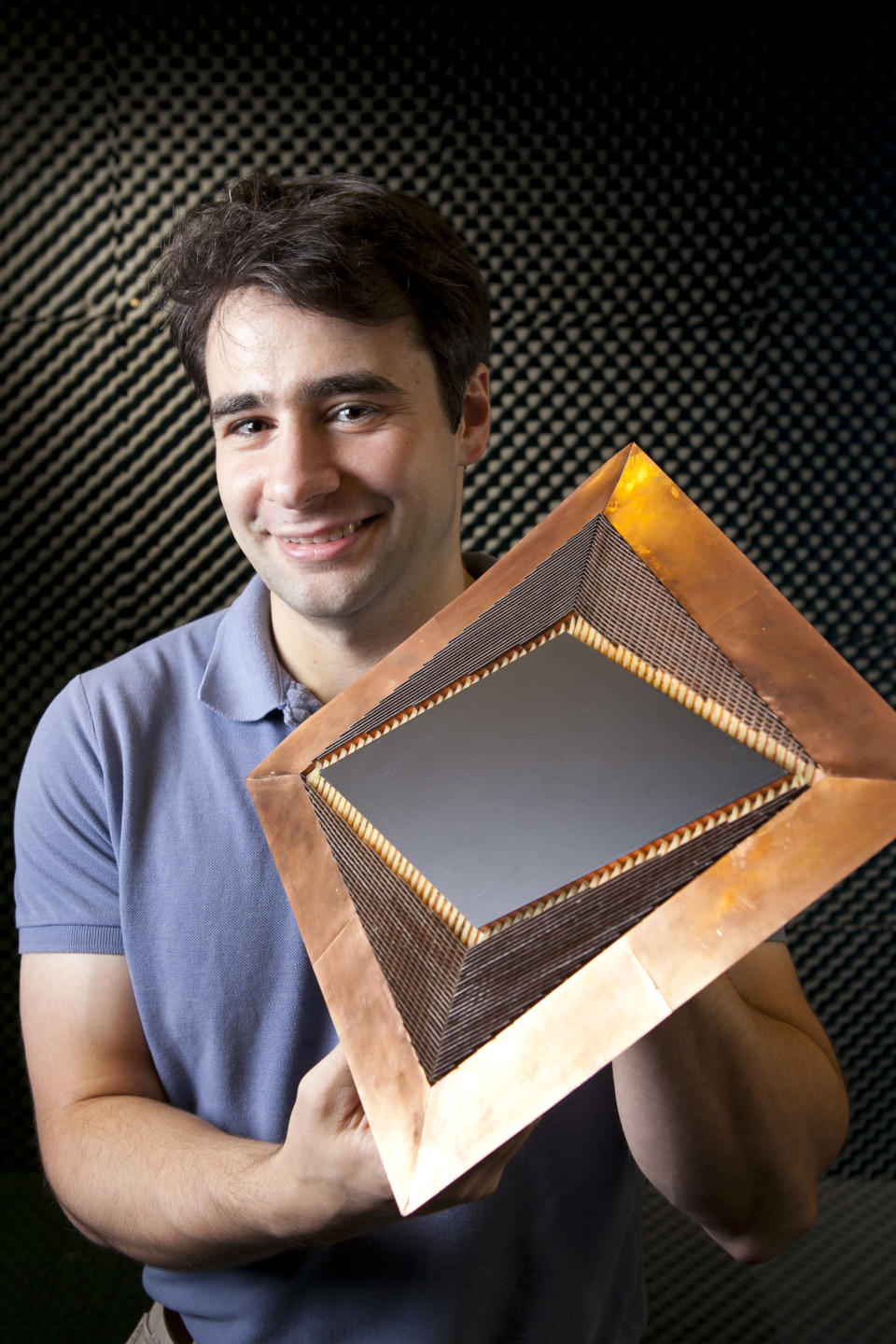'Harry Potter'-style cloak is first to offer 'perfect' invisibility
A Harry Potter-style 'invisibility cloak' could be round the corner after scientists found a way to 'bend' waves such as light around objects.
A Harry Potter-style 'invisibility cloak' could be round the corner after scientists found a way to 'bend' waves such as light around objects.
The 'cloaking device' irons out problems in an earlier device created by the same Duke University team - and now is 'near-perfect'.
The cloak is a diamond-shaped fibreglass and copper sheet which bends electromagnetic wave such as light around it - in effect, becoming invisible.
People looking at a finished version of such a 'cloak' would only see the light from behind it.
[Related: 'Super-earth' is nearest planet which could support alien life]
So far, in lab tests, the 'cloak' works with microwaves, rather than visible light, but it is a huge step forward for the technology.
The new version irons out tiny distortions that prevented 'true' invisibility, much in the same way as people are aware of a pane of glass, even as they look through it.

The first functional "cloaking" device was made by Duke University electrical engineers in 2006 worked like a charm, but it wasn't perfect.
The Duke team used "meta-materials," man-made objects with properties absent from nature - which guide electromagnetic waves around an object, thereby cloaking the object.
"In order to create the first cloaks, many approximations had to be made in order to fabricate the intricate meta-materials used in the device," said Nathan Landy, a graduate student working in the laboratory of senior investigator David R. Smith, William Bevan Professor of electrical and computer engineering at Duke's Pratt School of Engineering.
"Each quadrant of the cloak tended to have blind spots, at their corners with each other," Landy said.
"After many calculations, we thought we could correct this situation by shifting each strip so that it met its mirror image at each interface.
"We built the cloak, and it worked," he said.
"It split light into two waves which traveled around an object in the center and re-emerged as the single wave with minimal loss due to reflections."
"One issue, which we were fully aware of, was loss of the waves due to reflections at the boundaries of the device," Landy said.
He explained that it was much like reflections seen on clear glass.
Landy has now reduced the occurrence of reflections by using a different fabrication strategy.
The original cloak consisted of parallel and intersecting strips of fiberglass etched with copper.
Landy's cloak used a similar row-by-row design, but added copper strips to create a more complicated - and better performing - material.
The strips of the device, which is about two-feet square, form a diamond-shape, with the center left empty.
The researchers are now working to apply the principles learned in the latest experiments to three dimensions, a much greater challenge than in a two-dimensional device.

 Yahoo News
Yahoo News 


